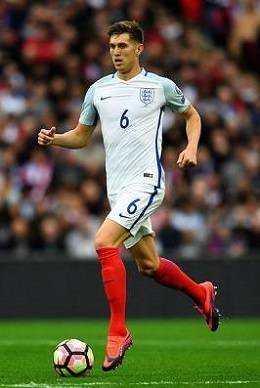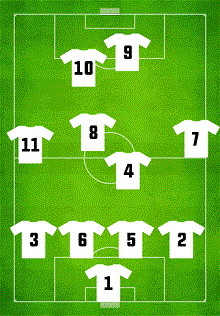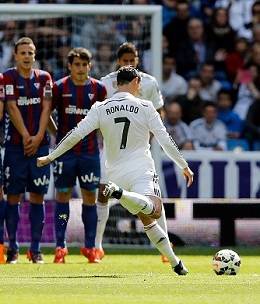FOOTBALL POSITIONS: There can be no more than eleven footballers on the pitch at any one time for each soccer team.
A full lineup will include defenders (one will be the goalkeeper), several midfield players, and forwards (e.g. leading the attack).
The squad also includes seven (7) extra players (substitutes). But, Premier League teams and European competitions only allow 3 substitutions per game.
This guide will help you understand all the soccer positions by numbers and their role on the field.
All 17 FIFA Football Laws apply to the 11-a-side soccer competitions. Even so, there must be at least seven (7) players to kick off an official match of association football.
Association Football Positions UK Guide
Most of the soccer player football positions by numbers refer to the olden days. Hence, many years ago, football numbers and positions got assigned to their field position. Doing so determined soccer roles and football player arrangement on the pitch.
The topic of soccer positions is among the frequently asked questions about football. Browsing through the FAQ section will give you all the answers to the most common questions.
1. Goalkeeper (goalie)
Wearing a football jersey with the number ‘1’ on the back is an important post to fulfill inside the goal area.
There are very few outfield players who envy the job of saving goals. In fact, they often see the keeper’s task as both crazy and brave at the same time.
So, here’s the deal:
As a rule, goalies execute the last line of the defence. They spend much of the game standing alone between the posts. When they are not stopping goals they will be watching their team make attacking moves.
But, a football goalkeeper is a shot stopper who plays a vital defencive role within the whole team. A major part of a goalkeeper’s job is stopping the other side from scoring goals.
First of all, they should be masters at catching the ball. They should also be skillful at palming it and punching it away.
They use all these methods to make saves or clear away the danger from crosses, headers, and long range shots.
What makes a good goalie in soccer?
Goalkeepers need to be agile and always alert, ready to make a match-winning save. The best goalkeepers have perfect positioning during any attacking move by the opponents. That said, knowing how to position your body as a keeper is a difficult technique to master.
Under the rules, goalkeepers are the only player on the pitch who can touch and hold the ball. But, they can only handle it inside their own penalty area. The keeper must also obey the ‘soccer back pass rule‘ to avoid getting an infringement.
Rule changes on passing the ball back to the keeper first came into force in 1992. It means the goalkeeper can no longer react to back passes by picking it up. Thus, there is now a greater emphasis on the control and ball kicking skills of goalkeepers.
Soccer Goalkeeper Styles in the Modern Game
- The Shot Stopper: Besides saving close range shots, a keeper with these goal saving attributes will:
- Be great positional players with sharp reaction skills and make themselves to be a big target.
- Have a high save to shot ratio and not be afraid to get any part of their body in the way of the ball.
- The Sweeper Keeper: In many ways the rise of the sweeper-keeper has replaced the traditional sweeping defender. They can read the game and display lightning speed with their feet to close off attacks.
And what about the goalkeeper kit…
Traditional football positions by number for a goalkeeper is in goal wearing shirt #1. As such, they must wear a different coloured kit from the outfielder players.
Even though yellow is the common colour for a goalie, it must also be different to that of the match officials.
Nowadays, goalkeepers are not the only players who wear gloves in the modern game. In fact, goalies have been wearing specialised gloves since the mid 1970s.
They do so to get better grip on the ball. Wearing gloves helps to protect their hands against close-range headers and rocket shots.
Related Football Guides
Handball Rule in Football | Check how FIFA Law 12 regulates intentional or deliberate ball handling.
Soccer Equipment Checklist | A detailed list of football gear and clothing worn by players and officials.
You rarely see a modern shot stopper wearing a cap and a woolen jumper these days. But, it used to be standard equipment for a soccer goalkeeper before the 1960s.
In fairness, they needed a hat to shield out the sun. Thanks to multi-tier stadiums, that is no longer a problem that goalies need to deal with.
So, let’s look at some of the other soccer positions and what they do on the pitch.
Soccer Positions Explained: Defenders
As you might expect, the location of the defenders on a football team is in front of the goalie. They have several tasks to perform. But the main intention will be to reduce any attacking moves developing near the keeper.
Defencive players will also try to prevent opposing attackers from building momentum. When called to do so, the role of defenders includes blocking any incoming shots.
Defending in football is nothing like playing an idle role. You must be fit and very hard-working to fill the soccer boots of a defender.
The best defenders are quick at anticipating the movement and intentions of opponents. The diagram shows John Stones playing in the central defender position for England.
Let’s dig a little deeper:
As a rule, even though a full squad will have more, most teams will set up for the game with four (4) defenders.
The positional line up of the defenders is ahead of the keeper, but behind the midfielders. They will be busy providing support when the attacking players move forward.

Even so, their primary function is to prevent the opposition from scoring goals. Hence, match statistics will show them defending their own half of the field for the majority of play.
The ones who move forward most often will be the taller defenders. It is not uncommon to see them racing up to occupy the opposing team’s penalty box. They will use their height to try and score when their team takes a free kick or a corner kick.
The role of the modern defender often encourages them to venture beyond the halfway line. As such, the role means they can support team attackers by supplying crosses into the box.
What if your team fails to score during a match? Then, the only method of winning points is to deny the others from scoring against you – right?
2. Right Back Players
The football full-back defensive position is where most of the attacking moves begin. Gaining ball possession in your own half, and moving the ball forward down the right side, is one role of a right back.
English football positions numbers usually have a right footed player at right-back. There can be a right footed player on each side of the defense – called a left-back and a right-back.
For example:
The primary role of Kyle Walker when he was playing for Manchester City was typical of the right back position.
3. Left Back Players
The players positioned at left back will have many responsibilities and tasks. They include winning tackles as well as blocking the opposition’s wide attackers.
Left back positions in football may also support the central defenders. They will chase after loose strikers, and try to steal the ball off them before they can score.
Teams that use modern soccer wingbacks will assign them with many roles. There are few sights in football that compare to the excitement of an attacking wingback. The best wingbacks are busy and tireless players, running up and down the flanks.
To sum that up:
A team using the typical wing-back formation will likely use three midfield players. That gives the wingers plenty of space and freedom down the sides of the pitch.
Attacking wing-backs are difficult to defend against. Even so, they will need an endless supply of agility, fitness, and speed. Wing-backs often have extra footballing qualities too. They are strong tacklers and superb crossers of the ball from wide positions in football.
Note: The term wing-back is a blend of winger and full-back. World famous football wing-backs are experts at tormenting and harassing the opposition. Players like Roberto Carlos typify the role of the modern wing-back.
4. Central Defender
Playing at the center of defence in football is a tough role for any soccer player. Being a committed tackler is one of the strengths you need to be a central defender. To be among the best, you should also be a powerful header in the air.
Central defender positions in football get constant action against the best attackers. There will be no shortage of strikers bombarding you with danger and threats at goal.
A successful football team is usually built around a strong solid defence. So, the central defender is the pivotal player in that particular zone. Playing at this football position requires total focus on the game. Famous central defenders have a unique ability to read the opposition’s next move.
Related Football Guides
Basic Rules of Football | Beginners can kick off right here with the top 10 rules for the football game.
FIFA Terminology of Football | Alphabetical list of jargon and slang phrases used by players and officials.
Soccer Equipment Facts and Facilities | Check out the exact pitch dimensions and football goal net size.
Playing at this spot means always making yourself available. That also means being ready to receive an easy pass from your goalkeeper when they have the ball.
As any passionate supporter knows, a lot can happen if a central defender gets caught ‘napping’. It often results with a striker’s turn of pace bursting through on goal. This is a typical technique that strikers use to score.
In summary…
The central defender position in football is not a relaxing place to be. The threats of danger will come at you from many different angles on the pitch.
You would be operating in the central part of the defence, a short distance in front of the goalkeeper. Most of the UK football positions and formations will deploy two central defenders. Even so, it is not uncommon to see three central defenders playing in European football.
5. Sweeper (libero)
The soccer sweeper system is more popular in continental football than English leagues. The role of the sweeper does not suit every club. It is a specialized appointment within the team formation.
A sweeper usually plays at the back and behind the defencive line. It is a role that adds solidity and security, as well as supporting the midfield players. Sweepers, or center-backs, need to be good game-readers with a sharp footballing brain.
They are rarely one-footed players. In fact, all sweepers in football should be confident on and off the ball. They also need to have excellent passing techniques.
Note: The introduction of the soccer offside rule had an affect on the sweeper system. It has now become one of the least used as part of the 11 positions in soccer.
Football Positions and Numbers: Midfield
The players with midfield soccer positions names occupy the space between the defence and the attack. A close analysis will show the midfielders dictating the speed of play. They are good at keeping possession of the ball and breaking up any opposing attacks.
It is not easy to track the whereabouts of most midfielders. They will cover huge distances throughout a game. The manager will expect them to defend as well as attack with speed.
So what does all this mean?
The team will struggle if they do not have a solid midfield. Why is that? The forwards will find it very difficult to score and the defencive players will come under attack.
It is not uncommon for modern day football managers to deploy a special task for a single midfielder. Assigning them to break up the attacks of the oppositions is commonplace.
6. Central Midfield (center-back)
Central midfield players can win or lose games – fact! Almost all the 20 Premier League teams all have one thing in common. Their squad includes world-class central midfield players.
The middle of the field gets most of the action throughout the regular 90 minutes of play. Influential midfielders need stamina. OK no big surprise there. Central midfielders will run their legs off for most of the game, and many will enjoy doing so.
The role of the ball winner…
They are often likened to the conductor of an orchestra. They organize the teammates and dictate the general pace of play.
To play in the central midfield position you should be skillful and strong at tackling. It will feel like you are running up and down the pitch without a break. And you will be!
Your chief responsibility is winning ball possession and developing scoring chances.
Note: The soccer positions diagram shows a typical 4-4-2 layout formation. Despite being several variances, it also shows football shirt numbers and positions.

7. Right Wing
Wide midfield soccer players rank among the most exciting footballers in the game. They are often called wingers but they signify a hardworking wing man.
Right wingers display clever footwork and fancy tricks. An example would be that of Ryan Giggs when he played at Manchester United.
8. Offensive Midfield
This player will occupy a deep position between the opposing defenders and their midfield. The freedom to roam also makes the player behind the striker difficult to mark.
The main reason is because they always have superior sharp vision for the game with a lightning turn of pace.
9. Striker
Strikers are selfish goal thirsty players – none more so than Cristiano Ronaldo (pictured). Scoring more goals than your opponent is one of the most simplistic winning regulations in football.
A good striker might have superior pace. Whereas, another might excel in their agility, strength, and power. The role, characteristics, and first goal of a striker is to finish the move up front.
What happens after you get the team on the score sheet? There is no better feeling in English football than performing outlandish goal celebrations.

10. Behind the Striker (second forward)
It is unusual nowadays not to see a second striker up front, playing behind the main striker. You may get several different titles if you play in these football numbers. They get called a support striker or sometimes a withdrawn striker. Either way, in simple terms you would be ‘playing in the hole’.
The onus often goes to the number 10 shirt in the list of positions in football. In short, they are support strikers and superlative playmakers.
In these football positions UK players usually get a ‘licence to roam’. It allows them to drift into areas of space to receive passes. The easiest way to explain a support striker is one that assists the central forward.
Playing behind the striker is unusual to see in Championship and lower league clubs. Even so, it has become a lot more popular at international levels.
11. Left Wing
You need bags of energy and stamina to play at wide midfield football positions and numbers. You should also be providing defencive cover for the full-backs. Left wingers often flash down the wing creating the match-winning opportunity for the strikers.

